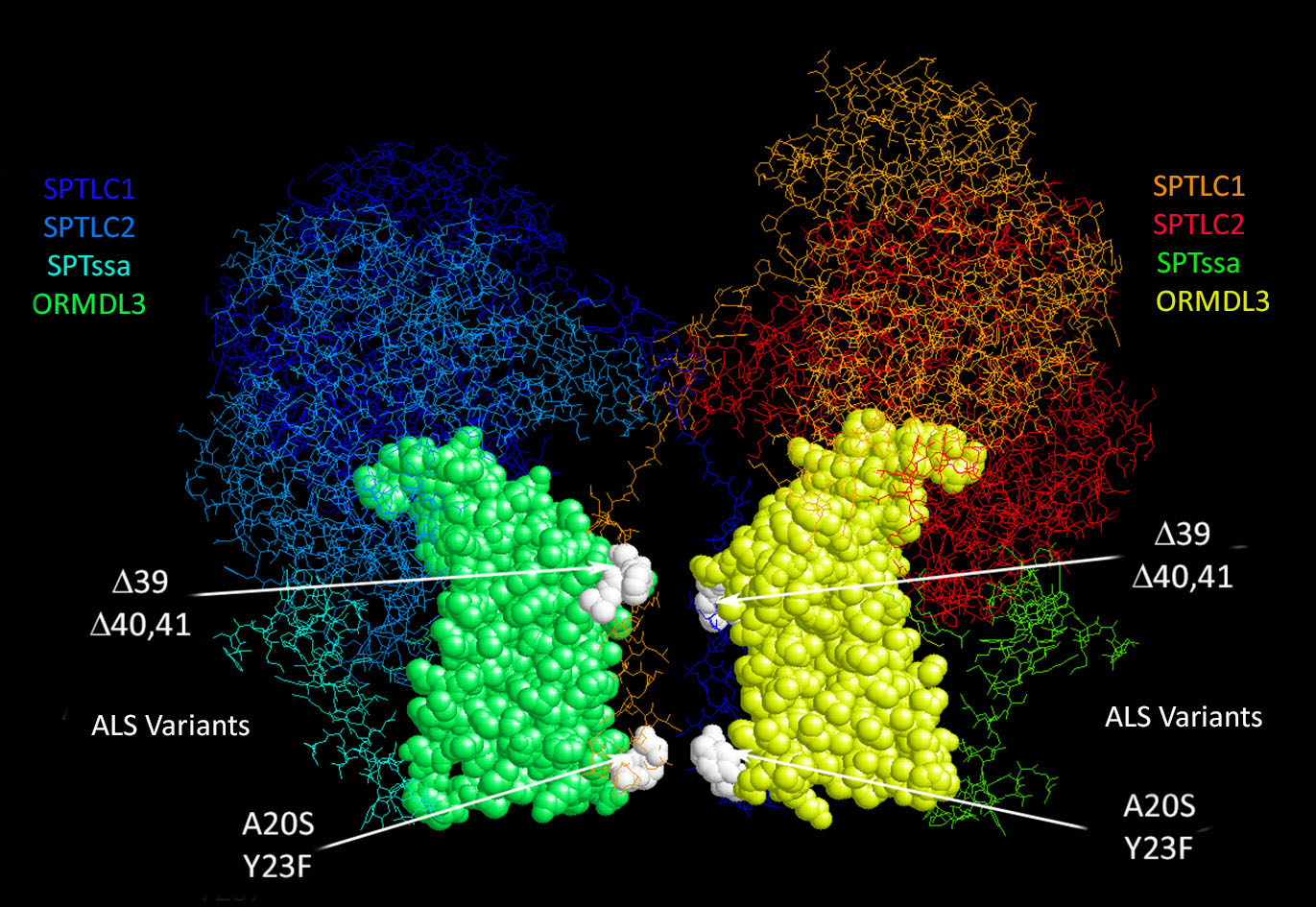Amyotrophic Lateral Sclerosis
Novel Metabolic Mechanism Implicated in an Early-Onset Form of Amyotrophic Lateral Sclerosis



August 18, 2021
Dr. Teresa Dunn, Uniformed Services University of the Health Sciences

Dr. Teresa Dunn at the Uniformed Services University of the Health Sciences received an Amyotrophic Lateral Sclerosis Research Program (ALSRP) Fiscal Year 2019 Therapeutic Idea Award for her project “SPT-Associated ALS, a New Paradigm for Disease: Mouse and Fly Models for Identifying and Testing Therapeutic Targets.” The objective of these studies is to develop cell and animal models of SPTLC1-associated ALS that can be used for therapeutic development and to investigate whether elevated sphingolipids will also prove to be useful biomarkers of disease in adult ALS patients. It has been recently discovered that patients with an early-onset form of ALS have mutations in SPTLC1. SPTLC1 is a subunit of serine palmitoyltransferase (SPT), an endoplasmic reticulum-associated multi-subunit enzyme that catalyzes the first step of sphingolipid synthesis. The mutations cause high and unregulated SPT activity resulting in elevated sphingolipids. The sphingolipids are highly enriched in the nervous system and are well-known for causing neurological disease when not maintained at proper levels.

Structure of the SPT/ORMDL complex with the variant regions in the transmembrane domain identified in ALS patients highlighted in white.
Dr. Dunn’s group, in collaboration with others, established that the SPTLC1 mutations that cause ALS do so by impairing the normal feedback inhibition of SPT by the ORMDL proteins. The resulting unrestrained SPT activity leads to elevated levels of sphingolipids, which are thus implicated in motor neuron death. The researchers hypothesized that allele-specific oligonucleotides (ASOs) directed against the SPTLC1-ALS alleles should restore normal sphingolipid homeostasis. Studies in patient fibroblasts indicate that this is the case and suggest these alleles as a potential target for a novel therapeutic strategy for the treatment of childhood-onset ALS resulting from SPTLC1 mutations. This work defines excess sphingolipid biosynthesis as a fundamental metabolic mechanism for motor neuron disease. Dr. Dunn will utilize her ALSRP award to continue this line of investigation and move into therapeutic testing including the use of dietary, genetic, and pharmacological approaches with the goal of demonstrating the role of sphingolipid perturbations in disease and for creating robust mouse models for therapeutic testing. The initial stages of this work have been reported recently in Nature Medicine.
Publication:
Mohassel P, Donkervoort S, Lone MA, et al. 2021. Childhood amyotrophic lateral sclerosis caused by excess sphingolipid synthesis. Nature Medicine 27(7):1197-1204. https://pubmed.ncbi.nlm.nih.gov/34059824/
Link:














